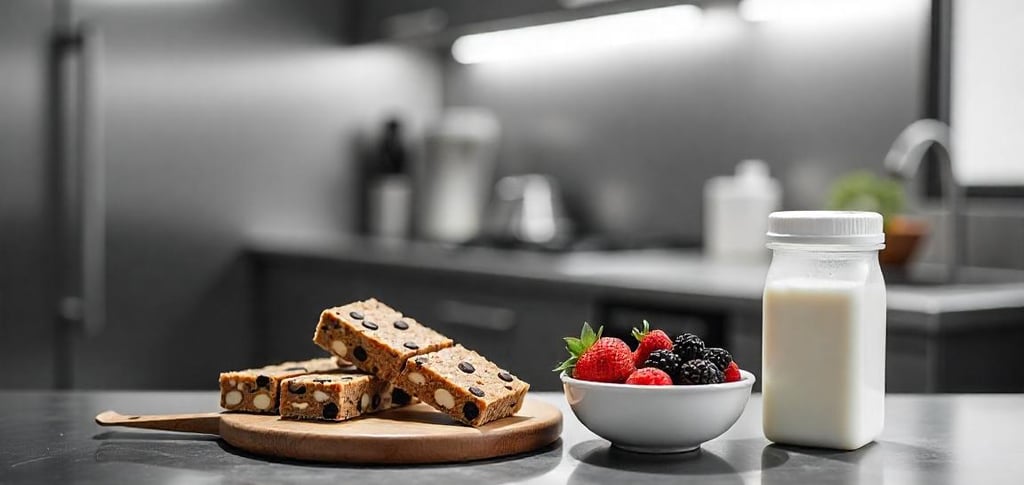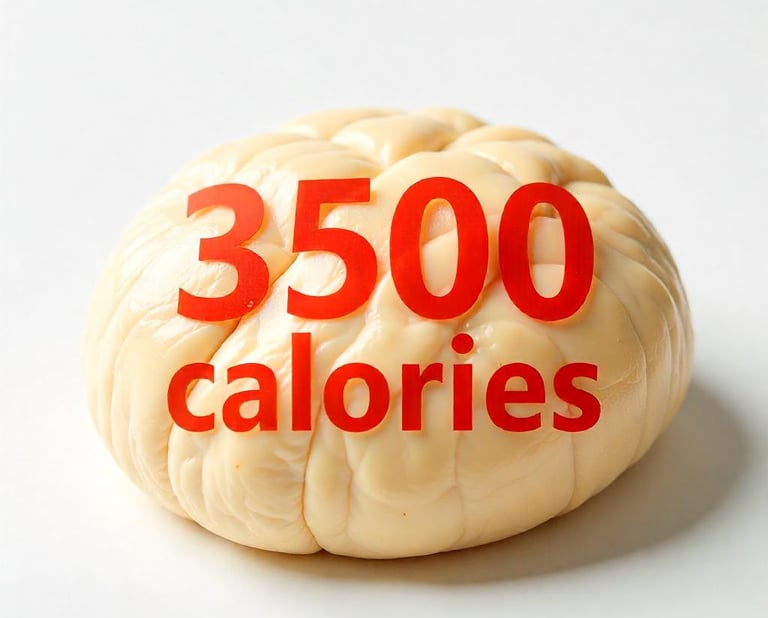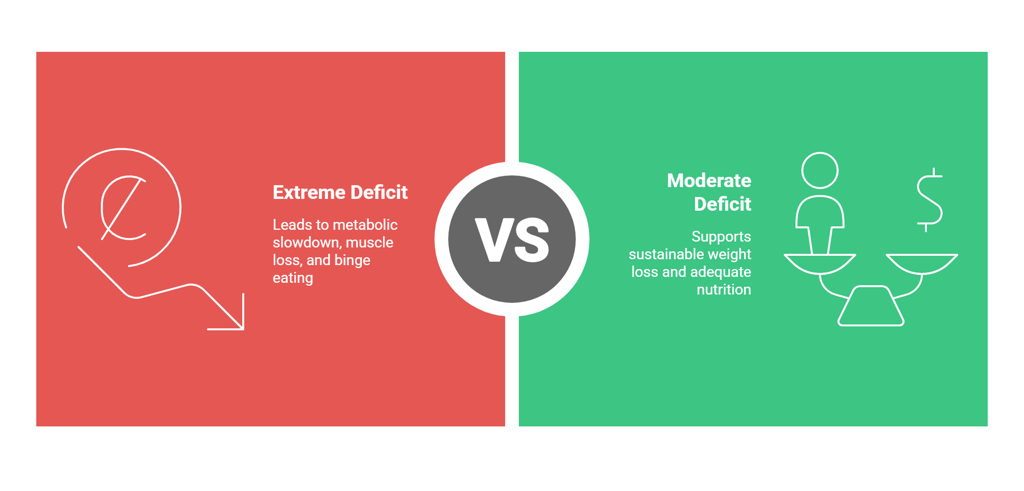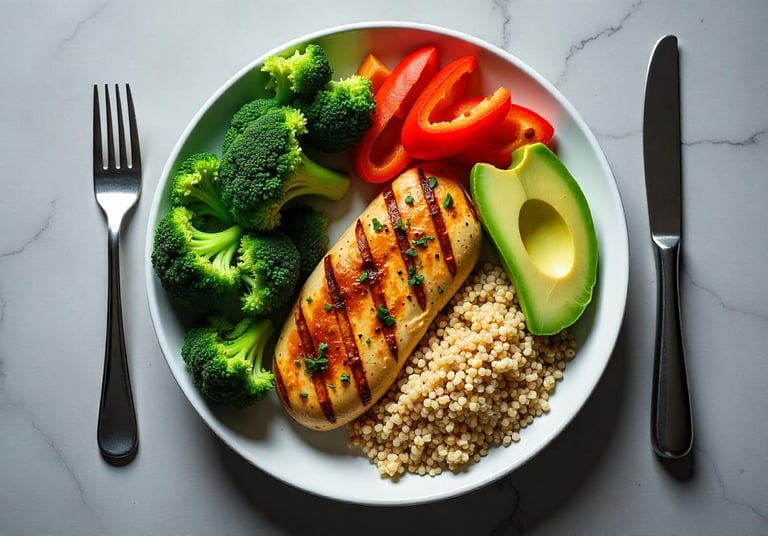How Many Calories Should I Eat to Lose Weight?
Discover exactly how many calories you need to eat for effective weight loss. Learn the science-backed approach to creating a calorie deficit safely and sustainably.
Daryn B
7/18/20257 min read


Picture this: you're standing in front of your bathroom mirror, wondering why the scale isn't budging despite your best efforts. You've been eating "healthy" foods, hitting the gym regularly, but something's missing. The answer likely lies in a simple yet powerful concept that governs all weight loss: calories.
If you've ever typed "how many calories should I eat to lose weight" into Google at 2 AM, you're not alone. It's one of the most searched health questions worldwide, and for good reason. Understanding your calorie needs is the foundation of successful weight loss.
The Science Behind Calorie Deficit
Understanding Energy Balance
Weight loss boils down to a fundamental principle: energy balance. When you consume fewer calories than your body burns, you create what's called a calorie deficit. When in a calorie deficit, your body breaks down body fat and muscle to get the additional energy it needs, resulting in weight loss.
Think of your body like a bank account. Calories are the currency. When you spend more than you deposit, you're in deficit. Your body then withdraws from its energy reserves (fat stores) to cover the shortfall.
The Magic Number: 3,500 Calories
Here's a fascinating fact: 1 pound (0.45kg) of fat equals approximately 3,500 calories. This means to lose one pound per week, you need to create a deficit of 500 calories per day (500 x 7 days = 3,500 calories).
However, this isn't a perfect formula. Your body is more complex than a simple calculator, and weight loss can vary based on numerous factors, including metabolism, body composition, and hormonal changes.
Calculating Your Personal Calorie Needs
Step 1: Determine Your Basal Metabolic Rate (BMR)
Your BMR represents the calories your body needs just to stay alive. Think of it as your body's idle speed. Even if you spent the entire day in bed, your body would still burn these calories maintaining basic functions like breathing, circulation, and cell production.
For Men: BMR = 88.362 + (13.397 × weight in kg) + (4.799 × height in cm) - (5.677 × age in years)
For Women: BMR = 447.593 + (9.247 × weight in kg) + (3.098 × height in cm) - (4.330 × age in years)
Step 2: Factor in Your Activity Level
Your Total Daily Energy Expenditure (TDEE) multiplies your BMR by an activity factor:
Sedentary (little to no exercise): BMR × 1.2
Lightly active (light exercise 1-3 days/week): BMR × 1.375
Moderately active (moderate exercise 3-5 days/week): BMR × 1.55
Very active (hard exercise 6-7 days/week): BMR × 1.725
Extremely active (very hard exercise, physical job): BMR × 1.9
Step 3: Create Your Deficit
For healthy weight loss, a calorie deficit of 500 calories per day should be enough for most people. This typically results in 1-2 pounds of weight loss per week.
The Goldilocks Zone: Not Too Much, Not Too Little
Why Extreme Deficits Backfire
Here's where many people go wrong. They think if 500 calories deficit is good, then 1,000 or 1,500 must be better. This approach often backfires spectacularly.
When you drastically reduce calories, several things happen:
Your metabolism slows down (adaptive thermogenesis)
You lose muscle mass along with fat
Hunger hormones go haywire
Energy levels plummet
You're more likely to binge
Daily intake must be at least 1000 calories/day according to health guidelines, but for most people, this is still too low.
The Sweet Spot for Sustainable Loss
Most nutrition experts recommend:
Women: 1,200-1,500 calories for weight loss
Men: 1,500-1,800 calories for weight loss
These ranges allow for adequate nutrition while creating a meaningful deficit.
Expert Insights on Calorie Management
Rita Faycurry, RD, emphasizes sustainability in her approach: "A sustainable diet is one you can follow without too much struggle. That means that you feel adequately satiated and energized, and the diet isn't detracting too much from your daily life."
Satya Jonnalagadda, a registered dietitian nutritionist, advises against quick fixes: "Instead, focus on nutrition and lifestyle changes — one healthy habit at a time."
Quality vs. Quantity: Why All Calories Aren't Equal
The Thermic Effect of Food
Not all calories are created equal. Your body uses different amounts of energy to digest, absorb, and process different macronutrients:
Protein: 20-30% of calories burned in digestion
Carbohydrates: 5-10% of calories burned
Fats: 0-5% of calories burned
This means eating 100 calories of chicken breast requires more energy to process than 100 calories of butter.
Satiety and Hunger Hormones
Protein and fiber-rich foods trigger satiety hormones like GLP-1 and cholecystokinin (CCK), helping you feel fuller longer. Meanwhile, processed foods high in sugar and refined carbs can trigger hunger hormones like ghrelin.
Practical Strategies for Calorie Management
The Plate Method
Instead of obsessing over every calorie, try the plate method:
Half your plate: Non-starchy vegetables
Quarter plate: Lean protein
Quarter plate: Complex carbohydrates
Thumb-size portion: Healthy fats
This approach naturally controls portions while ensuring balanced nutrition.
Mindful Eating Techniques
Research shows that eating slowly and mindfully can reduce calorie intake by 10-15%. Try these techniques:
Eat without distractions (no phone, TV, or computer)
Chew each bite 20-30 times
Put your fork down between bites
Rate your hunger on a scale of 1-10 before eating
Smart Swaps for Calorie Control
Small changes make big differences:
Cauliflower rice instead of regular rice (saves 150 calories per cup)
Zucchini noodles instead of pasta (saves 180 calories per cup)
Greek yogurt instead of sour cream (saves 100 calories per half cup)
Mustard instead of mayonnaise (saves 90 calories per tablespoon)
Common Calorie Counting Mistakes
Mistake 1: Ignoring Liquid Calories
That innocent-looking latte might pack 400 calories. Liquid calories don't trigger the same satiety response as solid foods, making them easy to overconsume.
Mistake 2: Eyeballing Portions
Studies show people underestimate portion sizes by 20-40%. A "small" handful of nuts might actually be 300 calories instead of the 160 you logged.
Mistake 3: Weekend Amnesia
Many people eat well Monday through Friday but throw caution to the wind on weekends. Those two days can easily undo five days of careful eating.
Mistake 4: Forgetting About Condiments and Cooking Oils
A tablespoon of olive oil has 120 calories. Cook with it, dress your salad with it, and dip your bread in it, and you've easily added 300-400 calories to your day.




Special Considerations for Different Groups
Age-Related Changes
As we age, our metabolism naturally slows by about 1-2% per decade after age 30. This means a 50-year-old woman might need 200-300 fewer calories than she did at 30 to maintain the same weight.
Gender Differences
Men typically have higher calorie needs due to:
Greater muscle mass
Larger body size
Higher testosterone levels
More active lifestyles on average
Medical Conditions
Certain conditions affect calorie needs:
Thyroid disorders can increase or decrease metabolic rate
PCOS can slow metabolism in women
Diabetes affects how the body processes nutrients
Medications like antidepressants can impact appetite and metabolism
Tools and Technology for Calorie Tracking
Top Calorie Tracking Apps
MyFitnessPal or LoseIt are generally recommended apps. Cronometer is a good option as well if you'd like to go beyond just calories and see if your diet is meeting your minimum vitamin/mineral intake requirements.
Features to Look For:
Barcode scanning for easy food entry
Recipe importing for home-cooked meals
Macro tracking to monitor protein, carbs, and fats
Exercise integration to account for activity
Progress photos to track visual changes
Creating a Sustainable Calorie Plan
Phase 1: Assessment (Weeks 1-2)
Track your current intake without changing anything. This baseline helps you understand your eating patterns and identify areas for improvement.
Phase 2: Gradual Reduction (Weeks 3-6)
Reduce calories by 200-300 per day. This gentle approach helps your body adjust without triggering extreme hunger or metabolic slowdown.
Phase 3: Optimization (Weeks 7-12)
Fine-tune your approach based on results. If you're losing weight too quickly (more than 2 pounds per week), increase calories slightly. If progress stalls, reassess your activity level and food choices.
Phase 4: Maintenance Planning
As you approach your goal weight, gradually increase calories to find your maintenance level. This prevents the yo-yo effect that plagues many dieters.
Beyond the Scale: Non-Scale Victories
Weight loss isn't just about numbers. Watch for these positive changes:
Improved energy levels throughout the day
Better sleep quality and easier time falling asleep
Clothes fitting better even when the scale doesn't move
Increased strength and endurance during workouts
Better mood and reduced anxiety
Clearer skin and improved complexion
Red Flags: When to Seek Professional Help
Consult a healthcare provider if you experience:
Extreme fatigue or weakness
Hair loss or brittle nails
Irregular menstrual cycles
Persistent digestive issues
Obsessive thoughts about food
Social isolation due to dietary restrictions
The Psychology of Calorie Restriction
Managing Hunger and Cravings
Hunger is normal when losing weight, but it shouldn't be overwhelming. Strategies to manage it include:
Eating protein at every meal to increase satiety
Drinking water before meals to promote fullness
Getting adequate sleep to regulate hunger hormones
Managing stress through meditation or exercise
Planning meals in advance to avoid impulsive choices
Building Healthy Habits
Research shows it takes an average of 66 days to form a new habit. Focus on:
Consistency over perfection - aim for 80% adherence
Small, sustainable changes rather than dramatic overhauls
Positive reinforcement for healthy choices
Self-compassion when you slip up
Understanding how many calories you should eat to lose weight is just the beginning. The real magic happens when you combine this knowledge with sustainable habits, patience, and self-compassion.
Remember, the "perfect" calorie number doesn't exist. What matters is finding an approach that fits your lifestyle, preferences, and health needs. Some days you'll eat more, some days less. The key is consistency over time, not perfection every day.
Your journey to better health isn't just about reaching a number on the scale. It's about building a healthier relationship with food, discovering what makes you feel energized and strong, and creating habits that will serve you for life.
Further reading on TheFitnessEdit.co.za: 'Nutrition Tips for Weight Loss After 30.'
You can also read about 'Calorie Goals Explained.'
Kickstart your weight loss in 7 days with this simple, FREE guide to stop the guesswork, boost your energy, and build healthy habits that fit your busy life.




The information provided in this blog post is intended solely for informational purposes. It is not meant to replace professional medical advice, diagnosis, or treatment. Consult health care providers for personalised medical advice and treatment options related to specific health concerns.
© 2025 Elevate Wellness Co. Pty Ltd. All rights reserved




